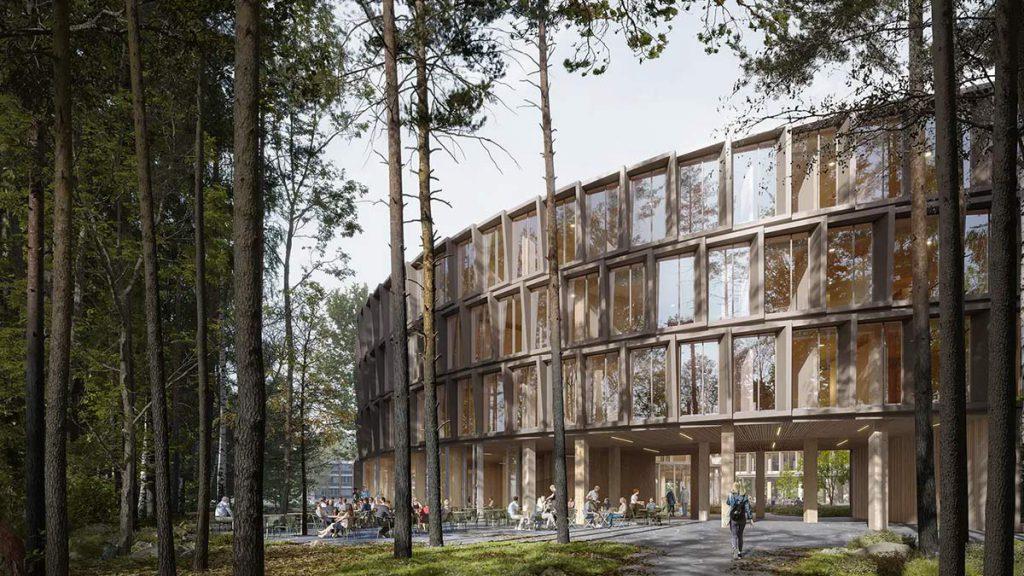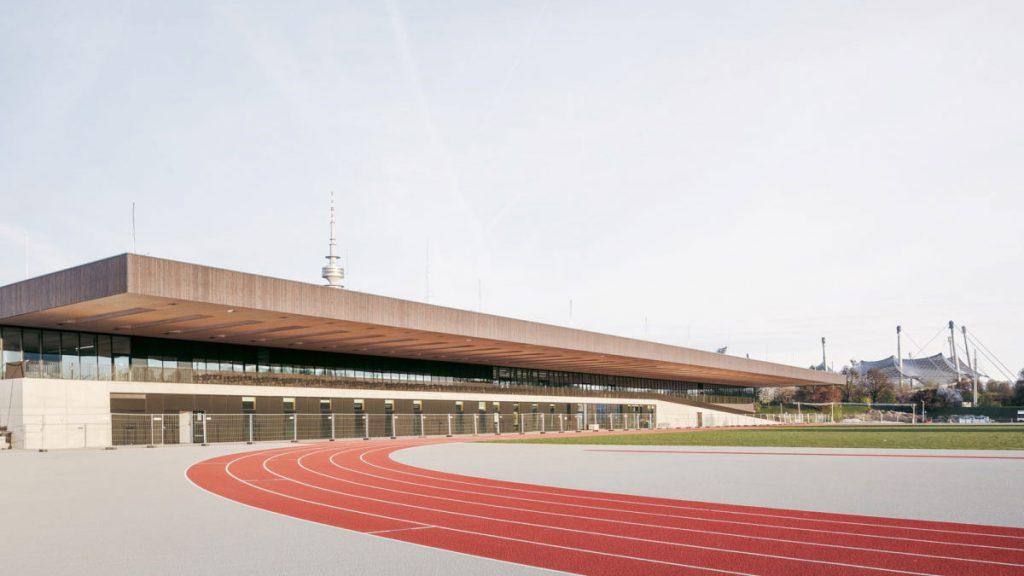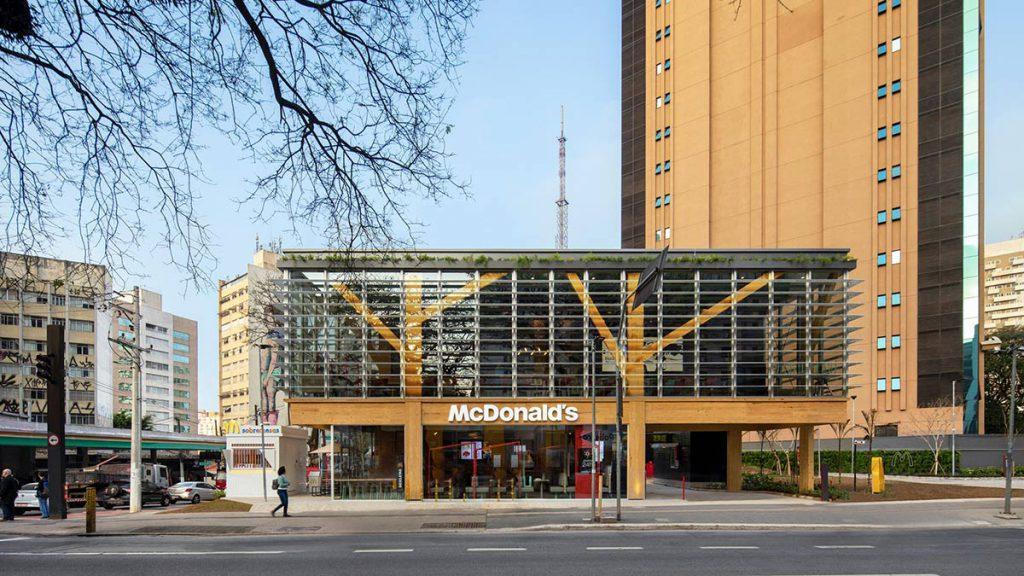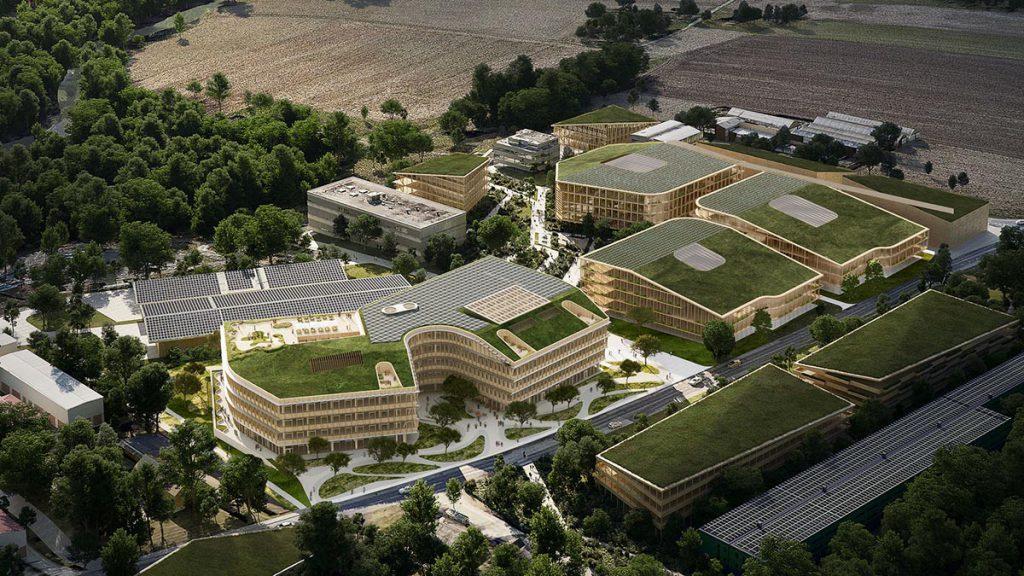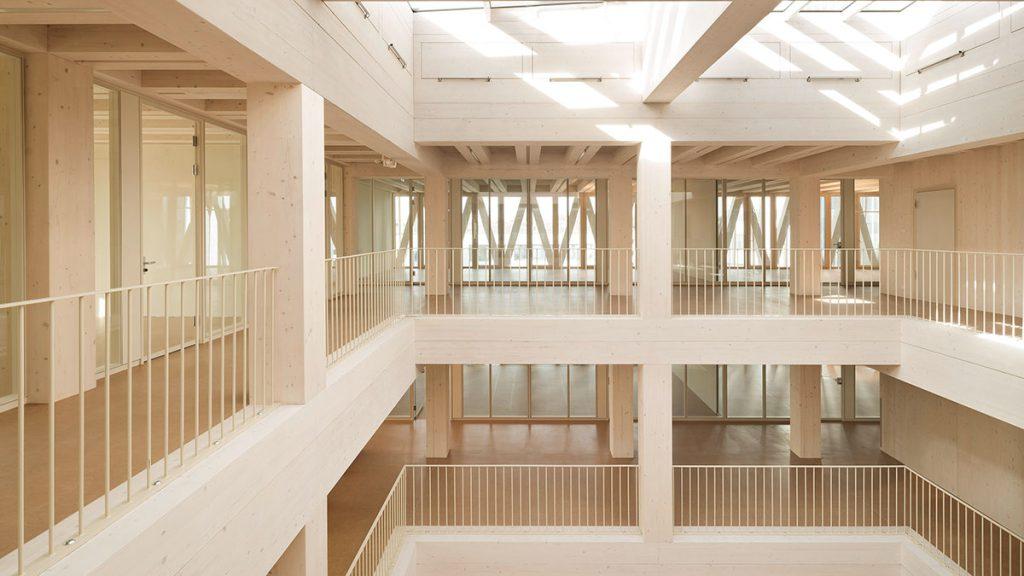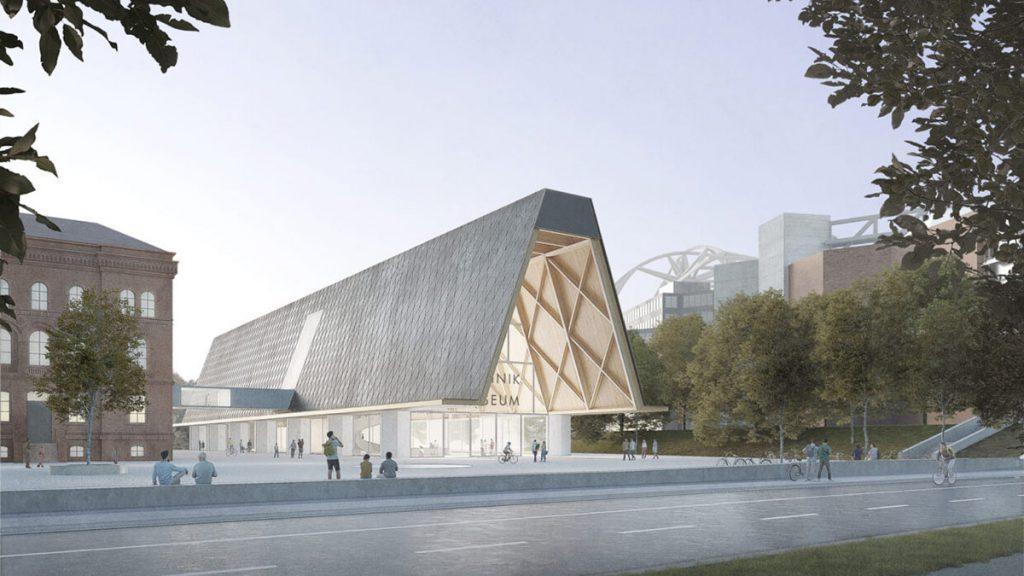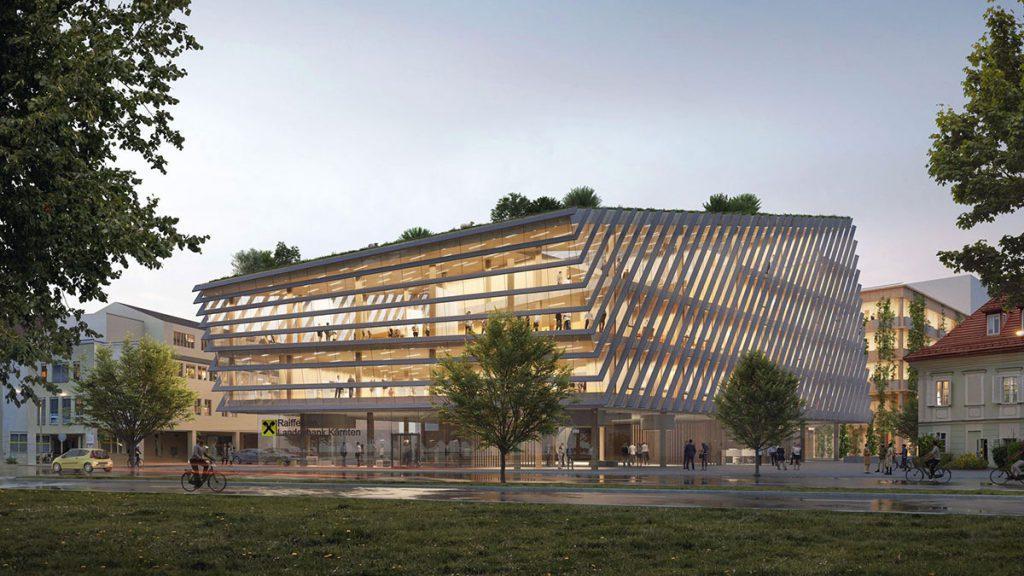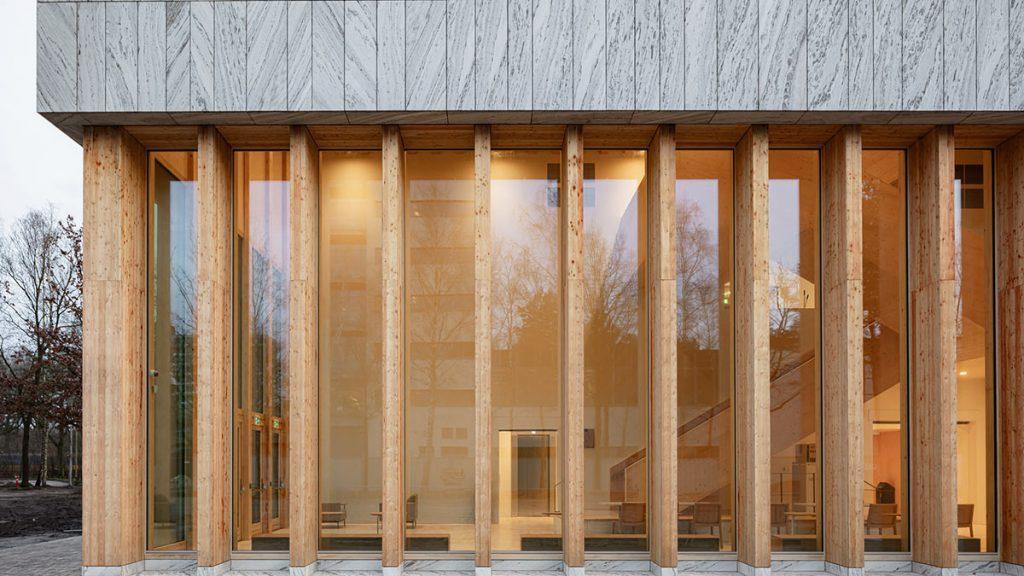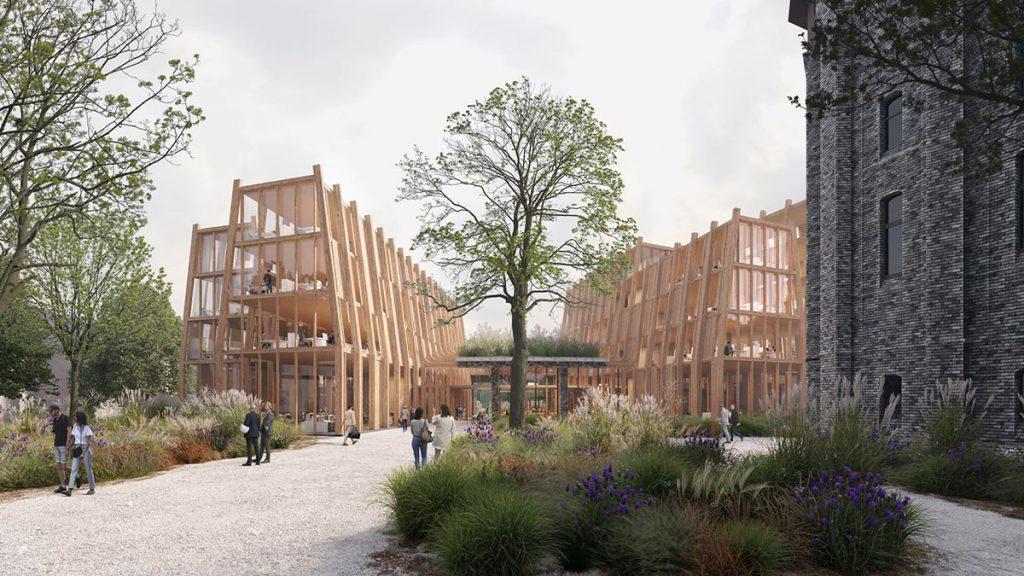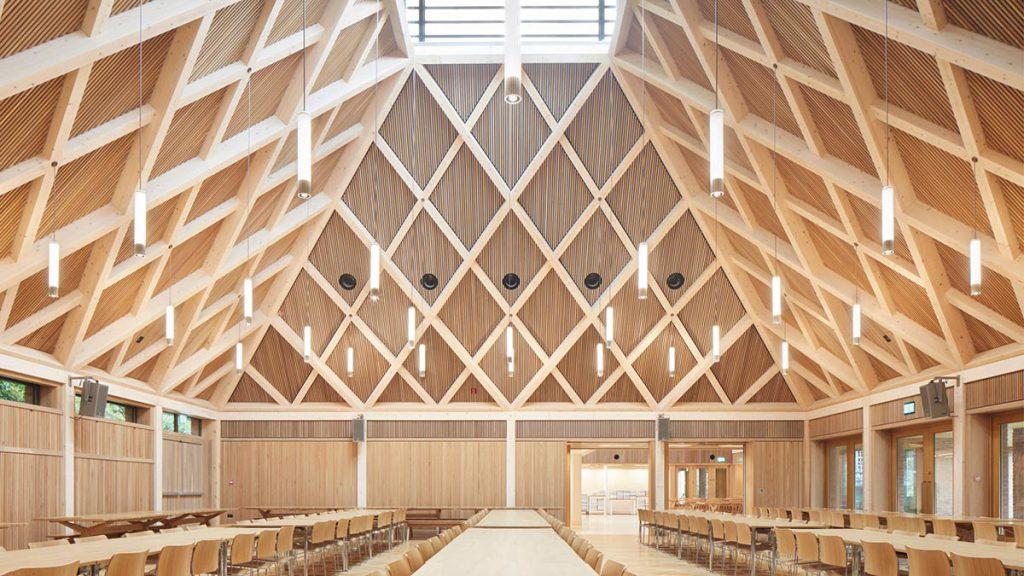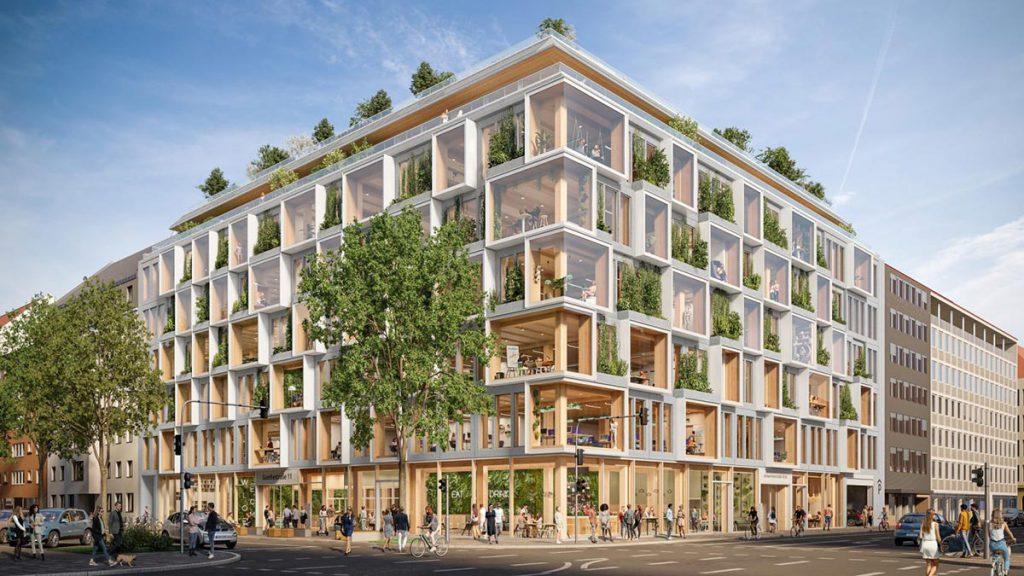
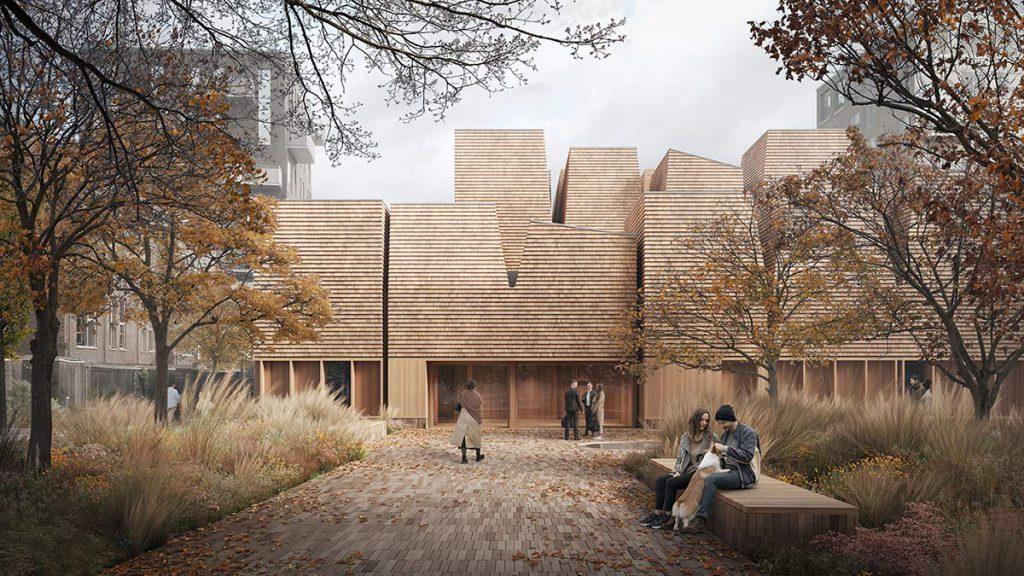
A church that stores carbon
As the first church to be built in Copenhagen for 30 years, it may well become an icon. Ørestad Church is a sculptural timber construction designed by Henning Larsen. A kind of “Church 2.0”, it is also a modern community centre that reaches out to everybody regardless of their belief.
Imagine a woodland scene, with trees standing closely together. In a glade, the light filters through the high treetops and casts a pattern on the ground below. It is an interplay of light and shadow that moves across the space as the day passes. This is the bright, uplifting feeling that the architects wanted to create with their design for the new Ørestad Church in Copenhagen. Rather than constructing a majestic building with a harsh exterior, the resulting experience is instead entirely organic and inviting. “The design concept reflects a modern understanding of spirituality. Instead of heavy stone, like in traditional churches, we are using wood,” explains Nina la Cour Sell, design director at Henning Larsen.
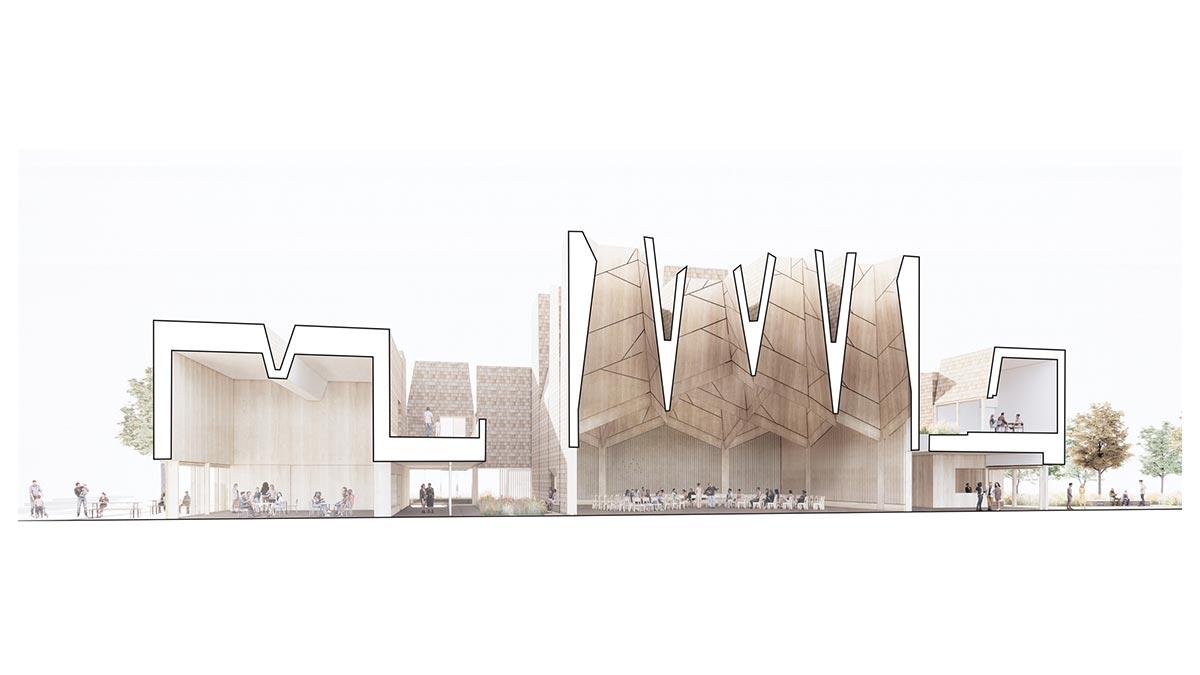
Improving the climate
The new church for Islands Brygge parish aims to generate a feeling of togetherness and inclusion, without any stately grandeur. Inverted projections within the thick façade offer seating niches, insect hotels and book exchange shelves. This turns the exterior of the building into an active public space. The rough shingle façade seems like tree bark and changes its appearance with age and the seasons.
The design concept reflects a modern understanding of spirituality. Instead of heavy stone, like in traditional churches, we are using wood.
Nina la Cour Sell, design director at Henning Larsen
Since a modern church also aims to keep its ecological footprint as small as possible, wood was chosen as the building material as it is climate neutral. “Wood and other renewable, bio-based materials are good alternatives for minimizing the effects of the church construction on the climate,” says la Cour Sell. “As trees absorb carbon dioxide throughout their lifetime, timber construction can help to reduce the amount of carbon dioxide in the atmosphere by extending the carbon cycle. A wooden building becomes a carbon store, so to say.”
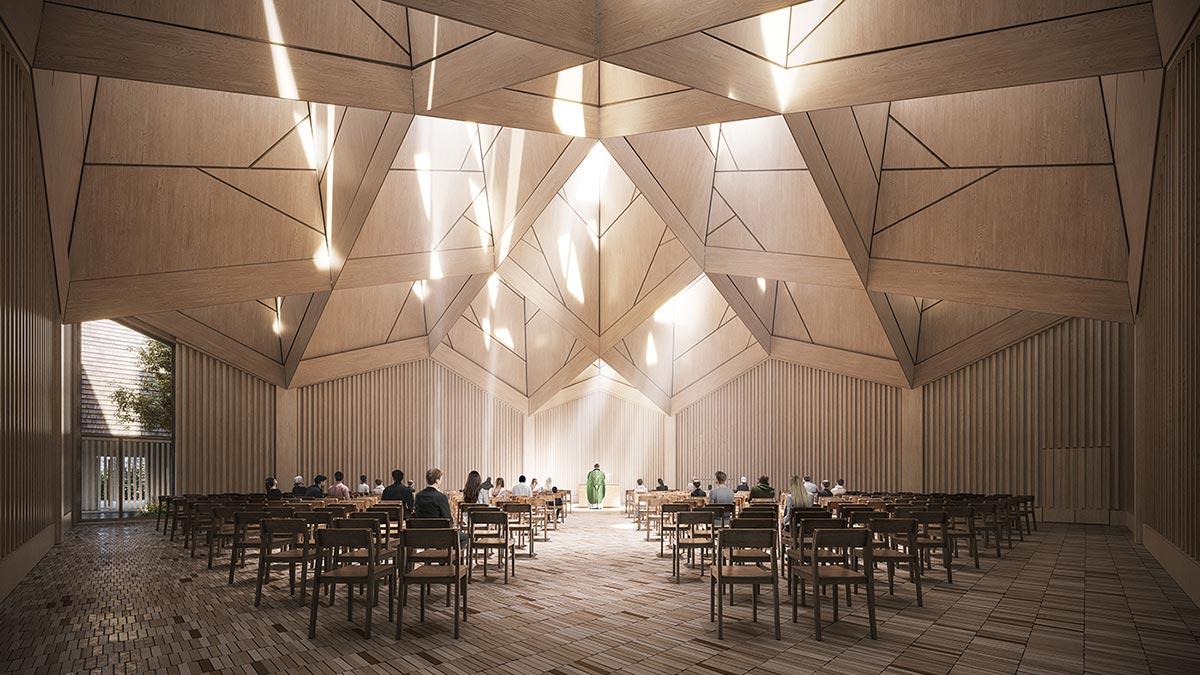
Community and inclusion
Ørestad is a young planned city on Copenhagen island Amager which has experienced a rapid increase in residents over recent years. The mobility concept was developed with the future in mind, and so it is possible to reach the city centre in 7 minutes and the airport in only 6 minutes. Protected natural area Amager Fælled is on its doorstep, with meadows, lakes, woodland and Highland cattle living wild.
As trees absorb carbon dioxide throughout their lifetime, timber construction can help to reduce the amount of carbon dioxide in the atmosphere by extending the carbon cycle. A wooden building becomes a carbon store.
Nina la Cour Sell, design director at Henning Larsen
What this young urban district still lacks are new spaces that are accepted by a broader spectrum of the local community, as was concluded by Copenhagen architectural office Platant in a participatory process. “A new church offers the chance to create a new kind of cultural community space that reflects a modern, inclusive society. A place that welcomes everybody, regardless of where they come from and their belief,” says la Cour Sell, explaining the motivation behind a new church building in current times.
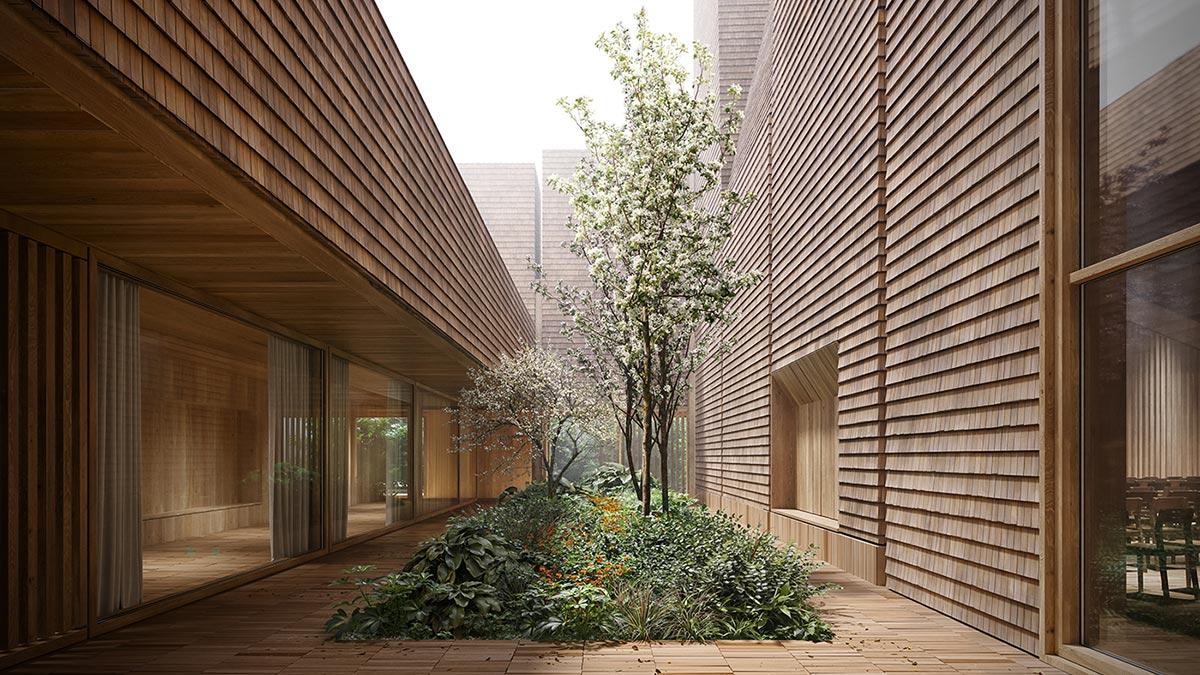
Pioneering architecture
From an architectural perspective, Ørestad Church fits in well with this concept. In the new urban development area at the southern end of Copenhagen, for several years alternative forms of living together, sustainable building materials and pioneering architecture have been explored. This includes Copenhagen’s new concert hall by Jean Nouvel, the Royal Arena by 3XN and the 8 House by Bjarke Ingels, which is Denmark’s largest residential building.
With its sculptural shingle roof, the new church adds a modern monument to the local architecture. Instead of one single overarching shell, the roof consists of cuboid volumes with different shapes. Seen metaphorically, the interplay between these individual cubic structures forms an organic unit – just like the trees in a forest or the members of a community. The roof is an expression of inclusion for a place where the local community is actively invited to meet.
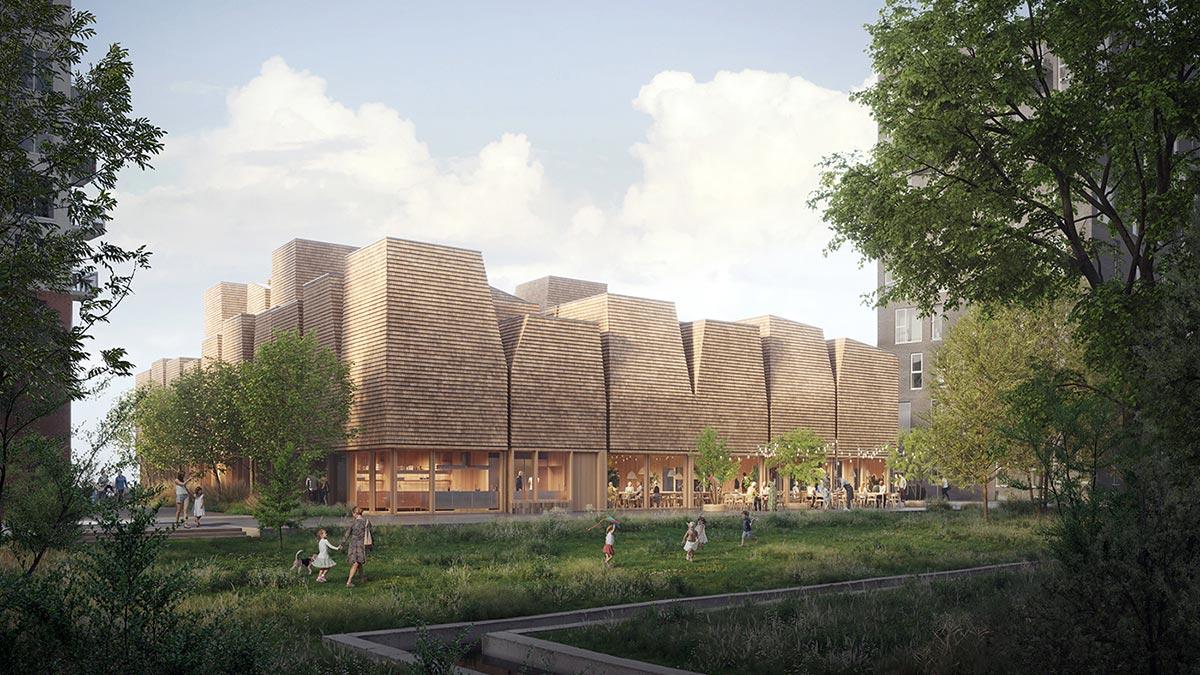
A sustainable landmark
Community project Folkehuset Absalon is very similar in its content. The Lajboschitz family, founders of design discount store Flying Tiger Copenhagen, have bought a former church in the district of Vesterbro and turned it into a successful community centre. Events like Fællesspisning (community dinners), yoga or pottery courses are booked out on a regular basis.
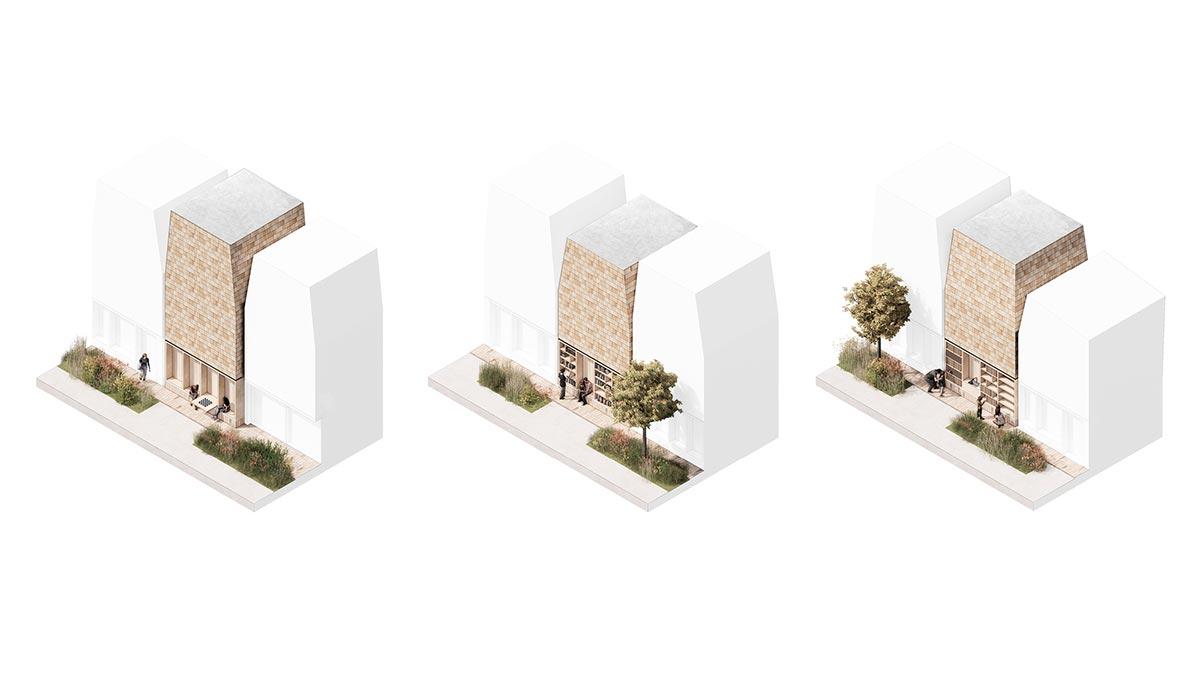
Besides church services, Ørestad aims to offer a broad spectrum of cultural and leisure activities that bring together the people in the neighbourhood. The spatial concept includes a secluded courtyard, an office and multi-use event rooms together with the church building itself.
Henning Larsen’s design shows the concept of a new kind of church that will surely become a social and ecological landmark. Building is scheduled to start in 2024, and consecration is expected in 2026.
Text: Gertraud Gerst
Translation: Rosemary Bridger-Lippe
Visualizations: Vivid Vision, Henning Larsen

